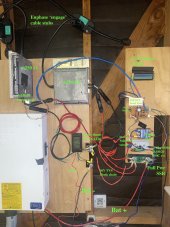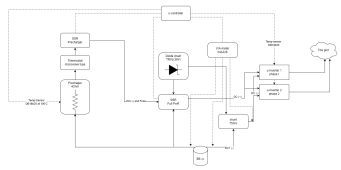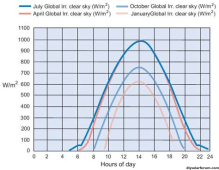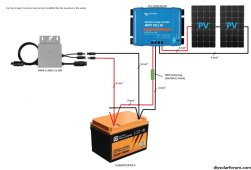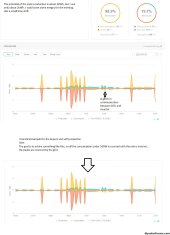Great, thanks.I ran Tesla modules from 43.2 to 47.1V today. Voltage delivered to each IQ7 was probably 1 - 1.5V less due to thin DC wires used as well as a bunch of crocodile clip wires in line, this is where I estimate 0.1 effective resistance between battery and inverters. I can measure exactly tomorrow. IQ7 micros have built in test mode where if you apply grid and PV within 3 seconds they skip the 5 minute wait time and begin feeding power to grid as soon as they boot up. I had 2 ohm resistors in series with each IQ7 during bootup and bypassed those resistors once AC power began to flow out to grid. Everything is controlled manually for now.
So you are operating off of a 48VDC battery and your IQ7 / IQ7+ Microinverters integrate a ‘test mode’ which allows you to connect AC and as long as DC is connected within 3 seconds and is connected through a 2 Ohm resistance, it will begin producing output much more quickly / immediately that the ~5 Minutes otherwise required for the full POST / grid signal characterization, correct?
You don’t have any added inline resistance but are estimating ~0.1 Ohm of wiring + contact resistance.
How did you determine a 2 Ohm resistance was required for the first ~3 seconds?
Have you tried and failed with 1 Ohm?
Have you tried and failed with 0 Ohms (of added resistance, meaning wiring + contact resistance only)?
The effective resistance slope of most solar panels is ~1 Ohm, so I’m trying to understand whether 2 Ohms is required or merely boots successfully.
If you could boot successfully with only 0.2 Ohms of inline resistance, would you bother with the complexity of bypassing a boot resistance to get back the ~20W / ~7% in lost efficiency?



